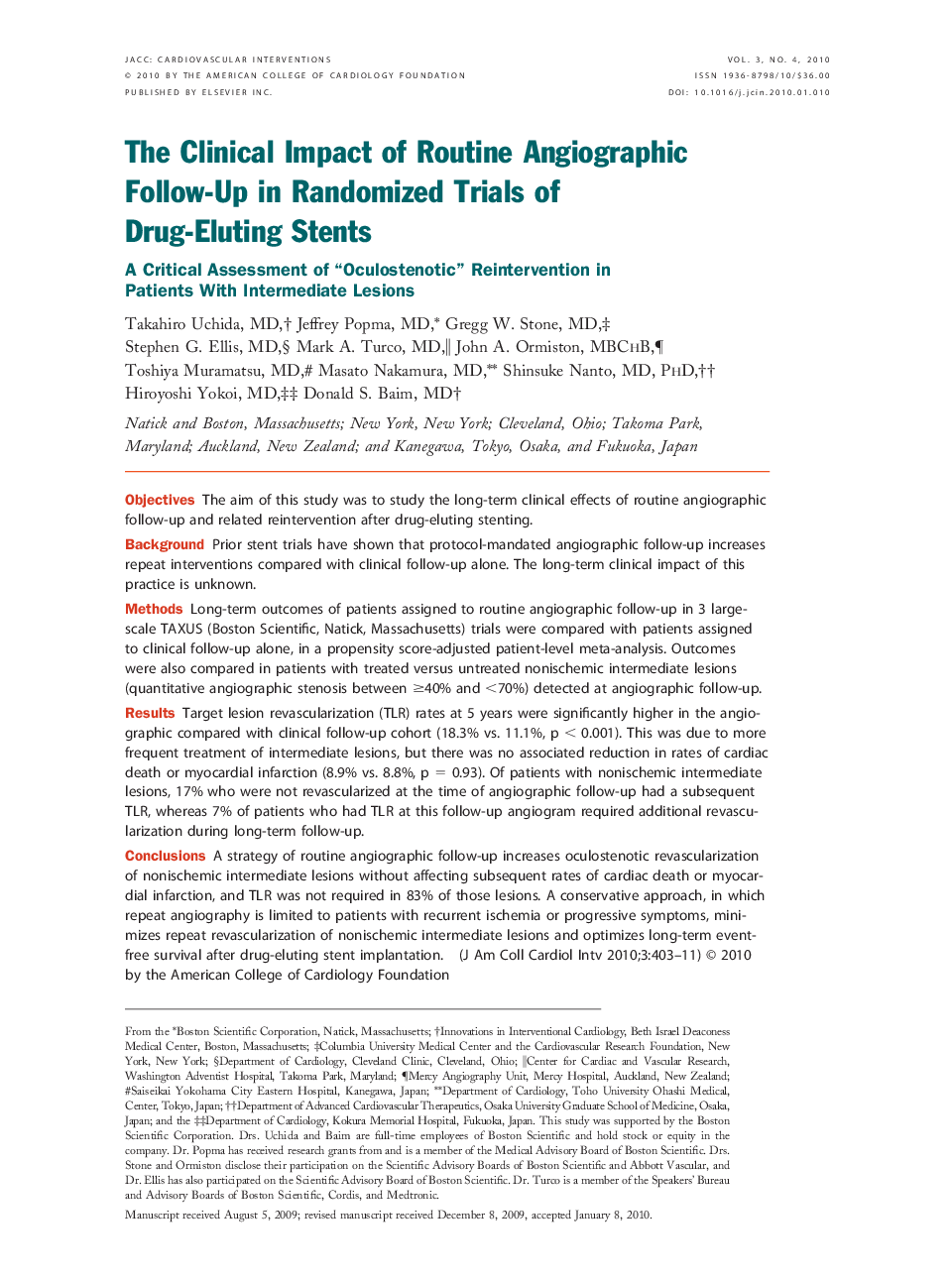| کد مقاله | کد نشریه | سال انتشار | مقاله انگلیسی | نسخه تمام متن |
|---|---|---|---|---|
| 2941883 | 1177090 | 2010 | 9 صفحه PDF | دانلود رایگان |

ObjectivesThe aim of this study was to study the long-term clinical effects of routine angiographic follow-up and related reintervention after drug-eluting stenting.BackgroundPrior stent trials have shown that protocol-mandated angiographic follow-up increases repeat interventions compared with clinical follow-up alone. The long-term clinical impact of this practice is unknown.MethodsLong-term outcomes of patients assigned to routine angiographic follow-up in 3 large-scale TAXUS (Boston Scientific, Natick, Massachusetts) trials were compared with patients assigned to clinical follow-up alone, in a propensity score-adjusted patient-level meta-analysis. Outcomes were also compared in patients with treated versus untreated nonischemic intermediate lesions (quantitative angiographic stenosis between ≥40% and <70%) detected at angiographic follow-up.ResultsTarget lesion revascularization (TLR) rates at 5 years were significantly higher in the angiographic compared with clinical follow-up cohort (18.3% vs. 11.1%, p < 0.001). This was due to more frequent treatment of intermediate lesions, but there was no associated reduction in rates of cardiac death or myocardial infarction (8.9% vs. 8.8%, p = 0.93). Of patients with nonischemic intermediate lesions, 17% who were not revascularized at the time of angiographic follow-up had a subsequent TLR, whereas 7% of patients who had TLR at this follow-up angiogram required additional revascularization during long-term follow-up.ConclusionsA strategy of routine angiographic follow-up increases oculostenotic revascularization of nonischemic intermediate lesions without affecting subsequent rates of cardiac death or myocardial infarction, and TLR was not required in 83% of those lesions. A conservative approach, in which repeat angiography is limited to patients with recurrent ischemia or progressive symptoms, minimizes repeat revascularization of nonischemic intermediate lesions and optimizes long-term event-free survival after drug-eluting stent implantation.
Journal: JACC: Cardiovascular Interventions - Volume 3, Issue 4, April 2010, Pages 403–411